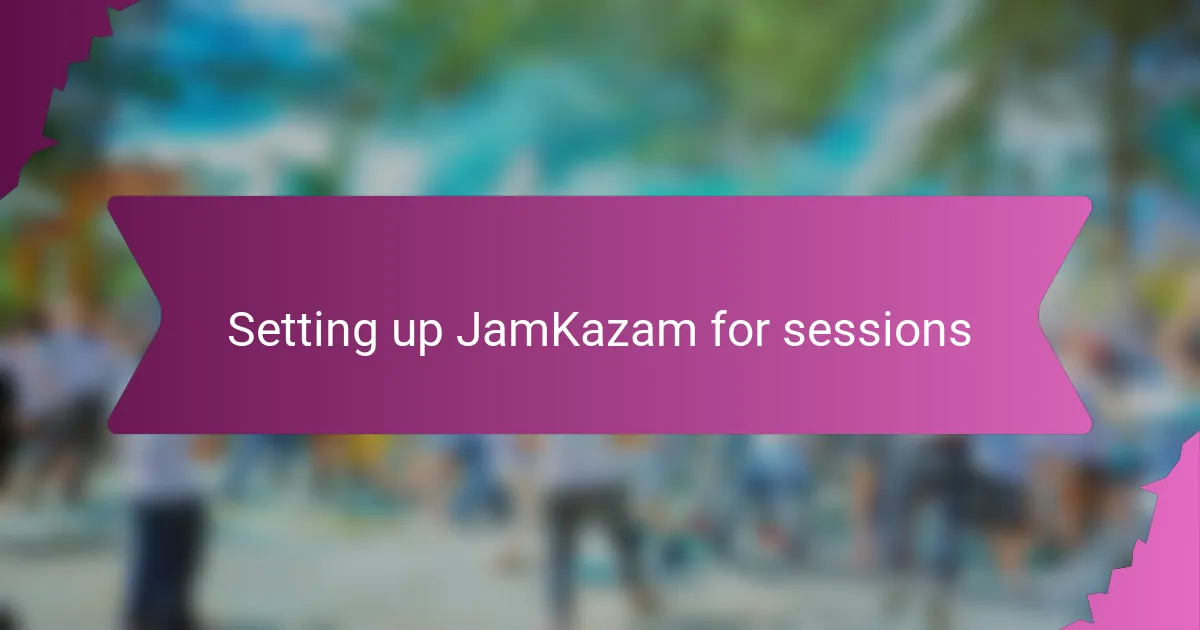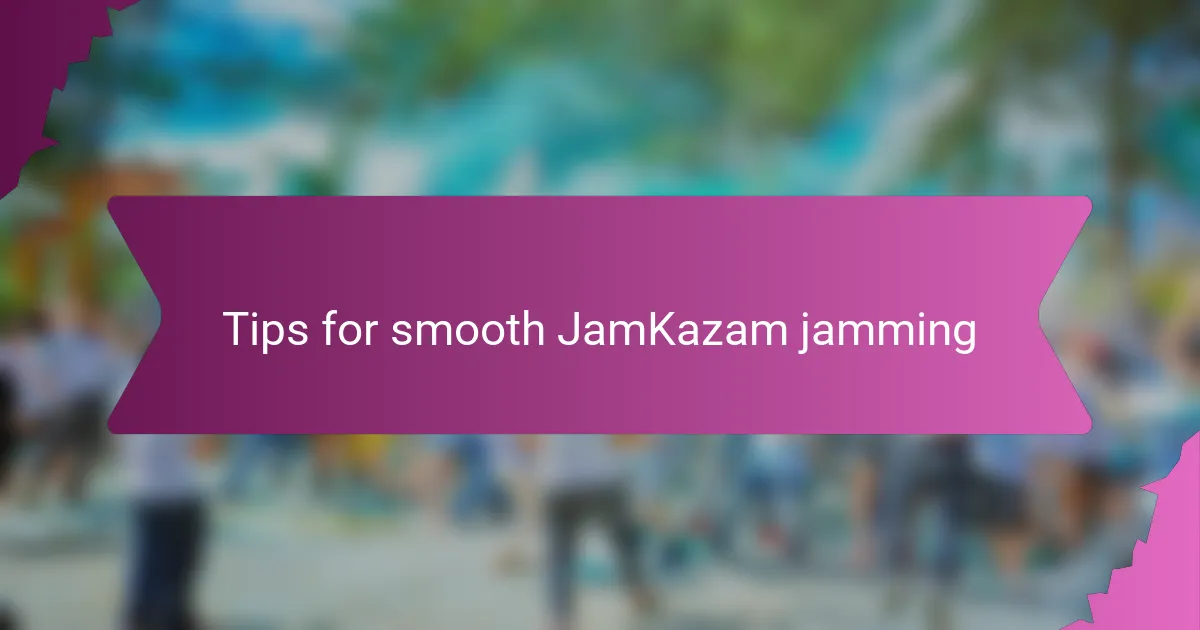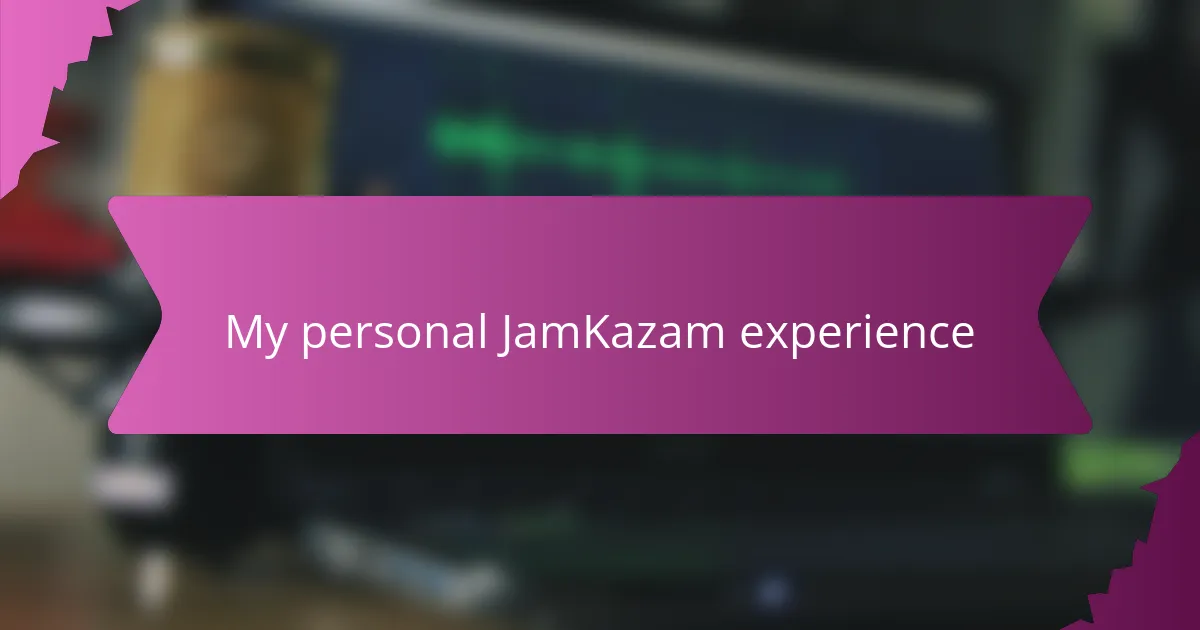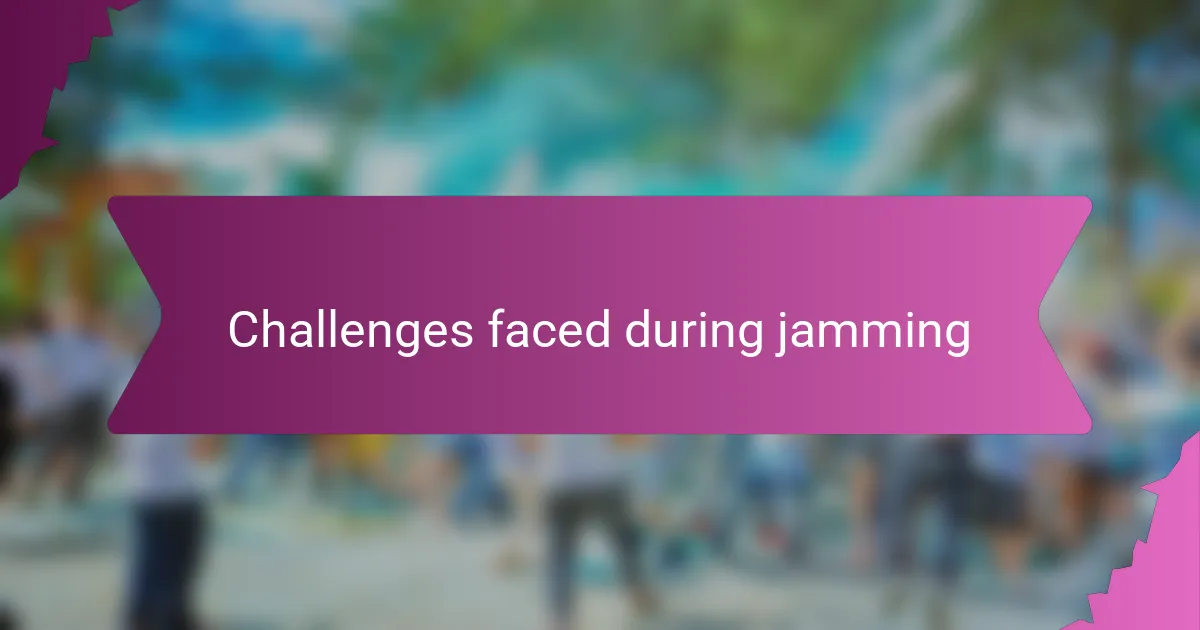Key takeaways
- JamKazam allows musicians to jam in real-time with minimal latency, fostering a natural collaboration despite physical distance.
- Online jamming enhances convenience and creativity, enabling spontaneous collaboration and exposure to diverse musical styles.
- Proper setup and stable internet connection are crucial for smooth sessions, and testing equipment beforehand can prevent technical issues.
- Clear communication and shorter, frequent sessions improve the overall jamming experience, keeping energy levels high and ideas flowing.

Overview of JamKazam platform
JamKazam is an online platform designed specifically for musicians to jam together in real time, regardless of their physical location. From my experience, what really stands out is how it manages to minimize audio latency, which is crucial for a smooth and enjoyable collaboration. Have you ever tried playing with someone miles away, only to be thrown off by delays? JamKazam tackles that challenge head-on.
The interface is surprisingly user-friendly, even for those of us who aren’t tech wizards. It offers features like live video and audio streaming, so you can see and hear your bandmates as if you were in the same room. I found this especially helpful for picking up on subtle cues and keeping the flow of the jam natural and spontaneous.
What I appreciate most is how JamKazam fosters a sense of connection in a digital space. It’s not just about playing notes together; it’s about sharing energy and creativity despite the distance. This platform reminded me that music truly is a universal language that tech can help us speak, no matter where we are.

Benefits of online jamming
One of the biggest benefits I’ve noticed with online jamming is the sheer convenience it offers. Imagine being able to collaborate with talented musicians around the world without ever leaving your room. Have you ever had to cancel a jam session because someone couldn’t make it? Online platforms like JamKazam eliminate that hassle entirely.
Another aspect that really resonates with me is how online jamming keeps the creative momentum alive. When inspiration strikes, I can instantly connect and play with others, capturing the spark before it fades. It’s a beautiful way to break through creative blocks, especially when physical meetups are impossible or impractical.
Lastly, online jamming expands your musical horizons in ways I didn’t expect. Playing with diverse musicians remotely has introduced me to new styles and ideas that I might never have encountered otherwise. It’s not just a technical solution; it’s a journey that enriches my musical expression and fosters ongoing learning.

Setting up JamKazam for sessions
Getting JamKazam set up for sessions wasn’t as intimidating as I initially thought. The platform guides you through installing its software, and it even runs tests to check your internet speed and audio devices. I remember feeling relieved when the latency test showed green—it gave me confidence that my session wouldn’t be a frustrating experience.
Connecting my audio interface and configuring the inputs felt natural, especially since JamKazam supports a wide range of hardware. Have you ever struggled with routing your instruments through complicated setups? JamKazam’s settings helped me streamline that part, leaving more time to focus on the music rather than the tech.
One thing I especially appreciated was how easy it was to create or join a session with friends. Sending invites felt just like sharing a link for a video call, which made everyone onboard quickly. That seamless start really set the tone for productive and fun jams right from the beginning.

Tips for smooth JamKazam jamming
Making sure your internet connection is stable and as fast as possible really transformed my JamKazam experience. I remember one session where a sudden lag almost derailed the groove, and it reminded me how much the quality of your network can make or break a jam. Do you think about your Wi-Fi speed before a jam? It’s worth prioritizing, trust me.
I found that using wired headphones instead of speakers helped keep the timing tight. When I first tried playing through my computer speakers, the slight echo was enough to throw off my rhythm. Switching to headphones made the session feel way more immersive and synchronized—like we were truly in the same room.
Another tip I swear by is testing your gear and settings before the group session starts. JamKazam’s latency test and audio setup wizard gave me peace of mind early on. How many times have you scrambled to fix sound issues mid-jam? Avoiding that chaos really helps keep the creative flow alive and frustration at bay.

My personal JamKazam experience
When I first jumped into JamKazam, I wasn’t sure what to expect, but I quickly realized how empowering it felt to play with others in real time despite being miles apart. Have you ever experienced that mix of excitement and nervousness before a live collaboration? The way JamKazam handled latency made me confident enough to focus on the music, not the tech glitches.
There was one memorable session where the connection was so seamless, it felt almost like we were in the same room. I could catch every subtle change in dynamics and timing from my bandmates, which made improvising together so much more natural. Those moments reminded me why I love jamming—because it’s about feeling the music together, not just hitting the right notes.
Of course, not every session was perfect. I remember a time when a sudden network hiccup disrupted the groove, and frustration crept in. But even then, I appreciated how the platform’s tools helped me quickly troubleshoot and get back on track. Those experiences taught me patience and the importance of preparation, which only deepened my appreciation for online jamming as a whole.

Challenges faced during jamming
Sometimes, even with JamKazam’s impressive latency management, I ran into moments where slight delays crept in, causing that frustrating feeling of playing just a fraction out of sync. Have you ever tried to keep a groove going when the timing feels off? It’s tricky, and it reminded me how sensitive live jamming really is to even the smallest hiccups.
Another challenge was dealing with unexpected network drops or audio glitches mid-session. I recall one jam where my connection suddenly wavered, and the flow just broke—everyone’s energy dipped, and it was a humbling reminder that technology, no matter how advanced, can still throw curveballs. How do you recover from a moment like that? For me, it became about patience and recalibrating quickly.
Also, I found that coordinating everyone’s equipment setup could be a bit of a puzzle, especially when folks have different interfaces or varying levels of tech-savviness. Sometimes, sessions started later than planned because someone struggled with routing their microphone or adjusting settings. While it’s part of the learning curve, these bumps made me appreciate the smoother moments all the more. Have you ever been caught off guard by gear issues just before playing? Those experiences taught me to double-check and communicate openly before diving in.

Recommendations for JamKazam users
One recommendation I can’t stress enough is to invest time in customizing your audio settings before every jam. I once jumped into a session without double-checking my input levels, and it threw off the whole group’s balance. Taking a few extra minutes to tweak your setup can save a lot of frustration and keep the creative energy flowing smoothly. Have you ever experienced how a small adjustment made your sound click perfectly? It’s surprisingly satisfying.
Another tip that really improved my JamKazam experience was to communicate openly with my bandmates about technical challenges. When delays or glitches popped up, just acknowledging them helped everyone stay patient and focused. Do you find that clear communication during these moments reduces tension? From my perspective, it turns potential frustration into a shared challenge rather than a roadblock.
Lastly, I recommend scheduling shorter, more frequent sessions instead of long marathons. Early on, I tried pushing through lengthy jams, only to feel drained and less inspired. Breaking things into bite-sized pieces kept the energy high and the ideas fresh. Have you noticed how quick bursts of creativity often lead to better music? For me, it made all the difference in staying motivated and connected.